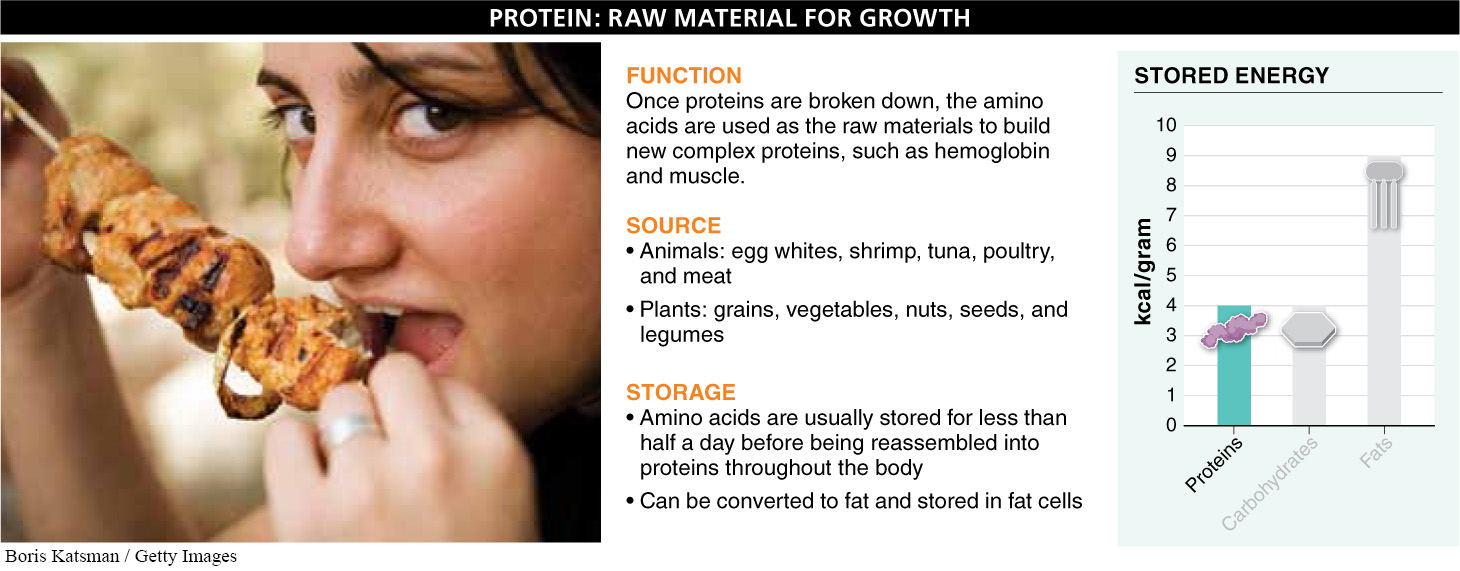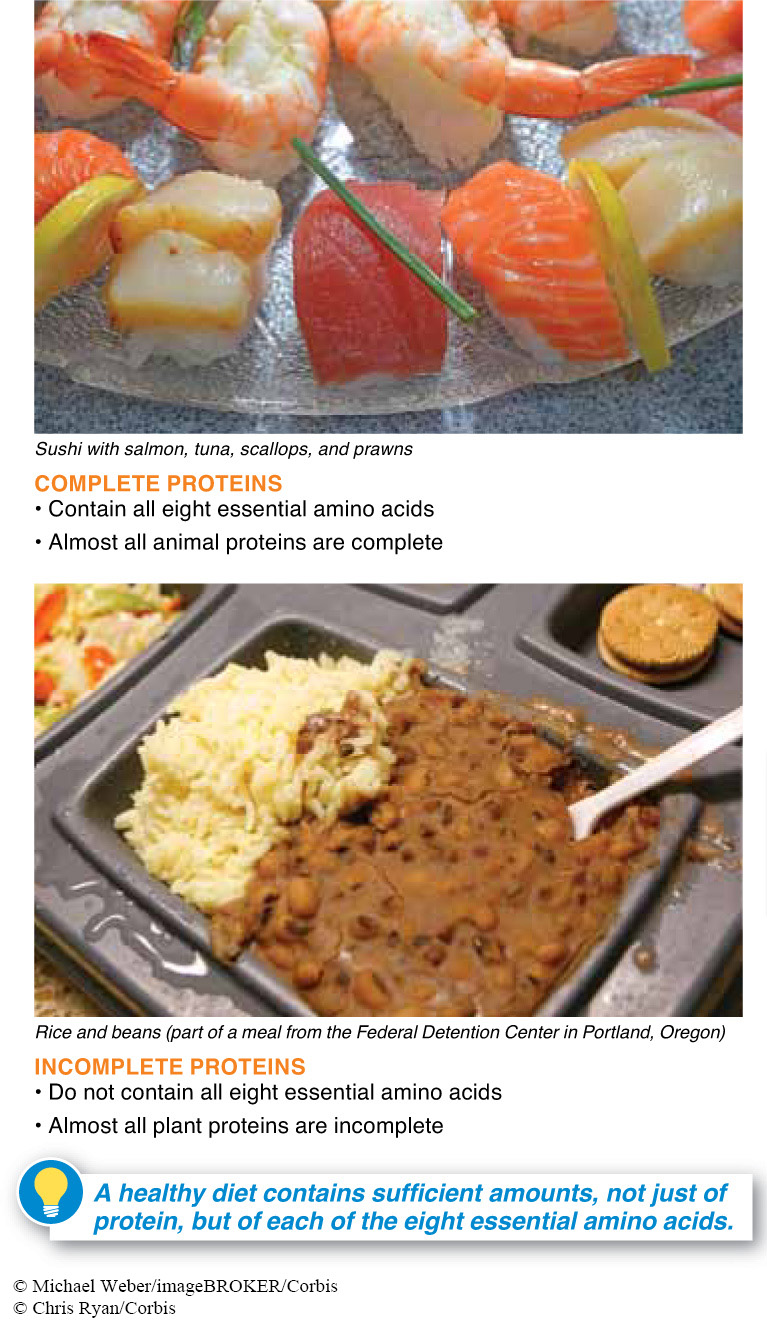When you are on the verge of starvation, any type of food can save you. So from that perspective, it’s true that calories are all that matter. But for optimum health, organisms must consume many types of nutrients. In this section and the next, we investigate the chief nutritional features of the three types of calorie sources: proteins, carbohydrates, and fats. We begin by investigating protein, a vital component of the diet and essential structural material in the body.
Proteins: Raw Material for Growth What are proteins, and what is their role in the diet? Protein in our diet is principally a building material. As described in detail in Sections 2-
The process of protein digestion and protein rebuilding does seem a bit inefficient: we consume entire, intact protein molecules such as those of muscle cells or hemoglobin, from chicken or fish or some other animal, which we then break down to individual amino acids that are used to construct the exact protein molecules needed by the body.
Besides serving as building materials, the proteins we build from amino acids function as enzymes, catalyzing chemical reactions (see Sections 2-18 and 2-19). Proteins, whether from our diet or from our own body tissues, can also be broken down to release energy or to be converted to and stored as fat. Protein breakdown happens, for example, when we are consuming too few (or too many) calories to sustain necessary growth and activities. It also happens during a long exercise session. Our bodies can use protein as fuel because we have a variety of methods of converting one type of chemical to another to release or store energy (see Section 4-
There are a great many sources of dietary protein, from both plants and animals (FIGURE 22-7). Animal sources include egg whites, shrimp, tuna, lobster, chicken, turkey, and all meat products. Plant sources of protein include grains, vegetables, nuts, seeds, and legumes, such as beans.

Why does Diet Coke (but not regular Coke) taste bitter if you leave it in the sun for a few days?
Try this. Put one can of Coke and one can of Diet Coke somewhere they’ll get hot, and leave them for a few days. Then taste them. The Diet Coke will lose its flavor and taste bitter, even if you cool it down, while the Coke will taste fine. What’s going on? Diet Coke, but not regular Coke, is sweetened with aspartame (NutraSweet is the brand name). Aspartame is made by linking together two amino acids, aspartic acid and phenylalanine—
880
Are all proteins the same, or do they vary in important ways? Animals, including humans, require 20 different amino acids to make proteins. Most animals, however, can produce only about half of these amino acids themselves—
All proteins are not created equal. Protein-
Why is it beneficial for vegetarians to eat beans and corn over the course of the same day?
How and where do we store proteins? Proteins and the amino acid pool they generate on digestion cannot be stored very long in our bodies, usually less than a day. By that point, they are broken down and the nitrogen we don’t need is excreted. Because our bodies are making proteins constantly, it is important to take in all of the essential amino acids over the course of each day.
The recommended daily intake of protein is approximately 0.8 grams per kilogram of body weight. This translates to about 45 grams of protein for a 120-

Animals aren’t the only organisms that need protein. Every organism—
881
TAKE-HOME MESSAGE 22.5
Animals consume three different types of macromolecules for calories: proteins, carbohydrates, and fats. Proteins provide raw materials for growth and for the production of enzymes. Food sources of protein vary in amino acid composition. Humans require 20 amino acids for building proteins, and 8 of these, called essential amino acids, can be supplied only by the diet.
How do essential amino acids differ from non-
The amino acids that we cannot manufacture and must obtain from our food are called essential amino acids, whereas the amino acids we are able to manufacture are called non-essential amino acids. Complete proteins contain all eight of the essential amino acids; almost all animal-derived proteins are complete. Incomplete proteins only contain a few essential amino acids; almost all plant-derived proteins (with the exception of soy protein) are incomplete.